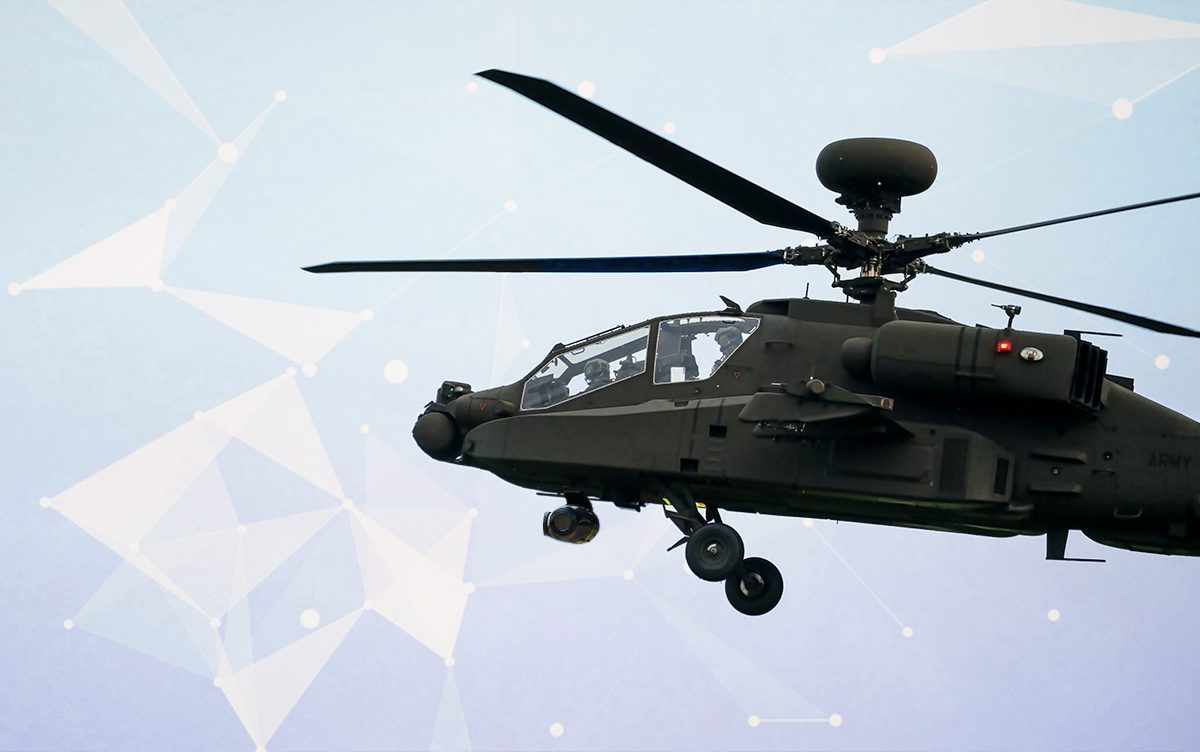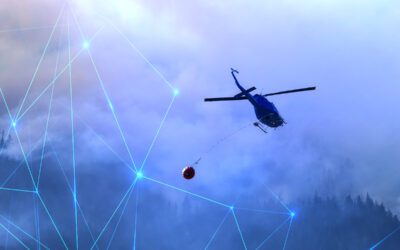Ever since the invention of helicopters, the technology has had military applications that have changed the face of warfare, reconnaissance and even search and rescue operations in front-line operations. Helicopter cockpit technology is constantly changing and evolving, pushing forward the advancement of military use through the incorporation of highly developed programming and software, as well as refined hardware.
The result is that the helicopter is still as relevant – if not more so – in the modern military than ever before. In this article, we’ll look at new and emerging helicopter cockpit technology including the advancement in HUDs, pilot control and even pilot seating, as well as how the modern helicopter dashboard has changed and how AI and AR could revolutionise the future of cockpit development.
How are helicopters being used in the military?
Helicopters are major assets in the modern military, playing crucial roles in a variety of applications. Attack helicopters are designed to engage the enemy and carry a much larger payload than other types of helicopters. They’re fast, incredibly manoeuvrable, and capable of flying at low altitudes, delivering close air support to ground forces.
The most common role for helicopters in the military is as transport and utility vehicles, moving troops quickly to specific locations and providing logistical support such as resupplying FOBs.
Reconnaissance and observation helicopters play a vital role in tactical planning, gathering data in real-time and relaying it back to ground command centres. The information they gather can be essential in mission planning, especially in fast-moving, fluid theatres.
Search and Rescue helicopters are specially kitted out to provide immediate triage capabilities on the move. Without these SAR helicopters, many injured military personnel and civilians would not be alive today.
Military helicopters are being used to deliver the full range of services, from troop deployment to SAR, information gathering to air support for ground troops. Incorporating the use of advanced avionics, helicopter cockpit technology and stealth and survivability enhancements, the role of helicopters in the modern military is now more important than ever.
How have helicopter cockpits evolved?
The earliest helicopter cockpit was a simple, ‘bear bones’ layout with very little in the way of refinements. Even the advent of autopilot in the mid-20th century was just a small advancement. The real leaps forward have come over the last 30 years, with the development of compact equipment and cockpit digitalization and the emergence of Augmented Reality (AR) software.
The key aspect of cockpit development has been the miniaturisation of equipment, allowing aircraft to carry far more technology than ever before. For helicopters involved in operations such as reconnaissance and Search and Rescue, the creation of AR and its incorporation into intuitive and user-friendly equipment has been the biggest step forward, making the process of information-gathering or even combat operations easier. Incorporating this cockpit technology into equipment that operators are already familiar with not only reduces training time but can also contribute to the success of a mission.
The different elements that make up a cockpit
Military helicopters are expensive and fitted out to fulfil a specific role. This means that they incorporate a lot of technology and hardware that you won’t find in civilian vehicles. However, some elements are universal and part of the anatomy of every helicopter in the air today. The only variations are in the application of the more technologically advanced aspects of the vehicle.
- Fuselage – the main body of the helicopter and, thanks to the advancement of the use of aluminium in aviation, are now lighter and stronger which in turn makes the aircraft easier to fly, more fuel efficient and more manoeuvrable. This translates to more time airborne and greater stealth and agility – all key factors in a combat aircraft.
- Cyclic control – the heart of a helicopter cockpit is the cyclic control or ‘stick’. This allows the pilot to control the pitch of the rotor blades using the cyclic pitch and collective pitch levers to tilt the aircraft backwards or forwards and side to side.
- Collective control – responsible for the elevation and descent movement of the craft.
- Foot pedals – on helicopters with tail rotors, the foot pedals control the deflection of the tail rotor.
Flying a helicopter is said to be the most difficult thing to do in avionics. It’s akin to rubbing your stomach, patting your head and doing a jig with your feet all at the same time! However, the advancements in helicopter cockpit technology have made things a lot easier for pilots and crew, in particular the development of four-axis Digital Automatic Flight Control Systems (DAFCS), which are in essence autopilots for helicopters.
The inclusion of DAFCS has increased the range and capabilities of military helicopters immeasurably. Today, they form the basis of all military craft and are now being augmented with a host of new technologies.
Helicopter technology and the future evolution of advanced cockpits
The helicopter cockpit is a very different environment to what you would find in earlier generation craft. Everything from the seat to onboard diagnostics, augmented reality and pilot controls are constantly evolving. When you consider that the lifespan of a helicopter interior is between seven and eight years, it’s crucial to the development of the industry that innovation continues to move forward.
The advantage of this reasonably fast turnaround is that aircraft can be retro-fitted with the most up-to-date technology on a general refit. However, thanks to miniaturisation through surface-mount components and micro-electronics, interim refits can be carried out quickly, bringing even an older aircraft up to spec relatively easily.
HUD – the expansion of the Heads Up Display for pilots
HUD gives guidance information during flight, operations and landing, especially at night or in low-level light. Previously, all a pilot had were night vision goggles and a radio altimeter. Now, rather than having a Tactical Flight Officer call out the heights to the pilot, HUD can allow the pilot to process instant information relayed from the aircraft’s sensors and RADULT configuration.
For the future, HUDs are starting to incorporate far more technical information including augmented reality layers so that the pilot has greater spatial awareness within a 3D rendition of the landscape. This can include everything from proximity to power lines to altitude, allowing for more nuanced navigation.
This highly advanced helicopter cockpit technology is already finding its way into craft such as the Lynx and has found real favour with Navy pilots who may have to land on aircraft carriers or helicopter pads on ships at sea. The continually updated information provided by a HUD allows the pilot to make fine adjustments to their approach for a safer landing or take-off, even in rough weather.
Advancing SAR capability equipment
One of the key roles we’ve already discussed is the use of helicopters for Search and Rescue, often at night, in hostile terrain, or adverse weather conditions. New military platforms are incorporating advanced SAR systems that use electro-optical cameras and solid-state electronically scanned radar. The Norwegian Air Force’s latest Leonardo AW101 All-Weather SAR is one of the best examples of this technology crossing over into the civilian arena too.
Augmented Reality systems play a key role in civilian SAR, and satellite-based systems with Performance-Based Navigation provide a greater degree of flexibility for instrument flight rules. These can be grandfathered over to military operations, especially for target surveillance, allowing a helicopter fitted with this technology to direct ground troops or relay accurate target data back to command centres.
Commercial systems that have a place in military aircraft
The crossover between military and civilian helicopter cockpit technology is considerable, particularly when it comes to safety systems and operational technology. These include:
- Terrain Avoidance Warning Systems
- Obstacle Protection LiDAR Systems
- Obstacle Warning Systems
- Traffic Collision Awareness Systems
- Synthetic Vision System
- Weather radar
The beauty of modern cockpit technology is that all of these systems can be incorporated into compact units that can easily be retro-fitted into a cockpit. The systems used to operate these are intuitive and use units that many flight operators and pilots are already familiar with, including touch-screen technology. This fingertip technology makes it incredibly easy to operate and manage data systems in real-time, without impacting the capabilities of the pilot.
The ease of use also means that the risk of pilot fatigue is reduced, allowing pilots to fly for longer without compromising their performance or the safety of the aircraft and everyone onboard.
Synchronised mapping
One of the most recent developments and one that could influence the future of helicopter cockpits in the military and civilian arenas is the Airbox ACANS or Aviation Command Aircraft Navigation System and iPad-compatible Electronic Flight Bags or EFBs. These allow synchronised mapping in real-time with other users such as the onboard Tactical Officer or even ground command units.
This information can ‘flag’ up search areas and overlay them onto a HUD or ACANS map. The fact that these are simple ‘bolt-on’ applications makes them super-easy to implement quickly into any aerial platform, whether that’s for civilian SAR or military reconnaissance uses.
FlySight Solution – bringing AR into the future of the helicopter cockpit
For years, FlySight has been at the cutting edge of innovation and technology, producing augmented reality programming that slots seamlessly into any helicopter control panel. OPENSIGHT Mission Console is specifically designed to support airborne units, delivering augmented reality in a layer system that integrates multi-layered moving maps. The result is real-time information relayed directly to the operator and to ground command units.
Improved geospatial awareness, greater refinement in both mission and SAR activities, and reduced operator fatigue all come together to make OPENSIGHT Mission Console one of the most advanced airborne AR systems operating today.
To find out more about Mission Console, contact us in confidence for further information, or download the ⬆ brochure and technical specifications now.





